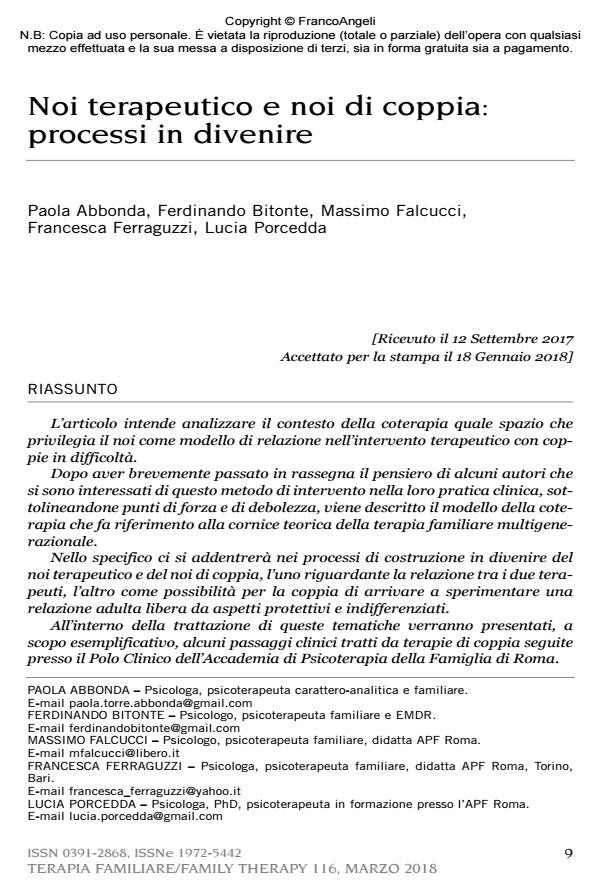Therapeutic we and couple we: developing processes
Journal title TERAPIA FAMILIARE
Author/s Paola Abbonda, Ferdinando Bitonte, Massimo Falcucci, Francesca Ferraguzzi, Lucia Porcedda
Publishing Year 2018 Issue 2018/116
Language Italian Pages 22 P. 9-30 File size 114 KB
DOI 10.3280/TF2018-001002
DOI is like a bar code for intellectual property: to have more infomation
click here
Below, you can see the article first page
If you want to buy this article in PDF format, you can do it, following the instructions to buy download credits

FrancoAngeli is member of Publishers International Linking Association, Inc (PILA), a not-for-profit association which run the CrossRef service enabling links to and from online scholarly content.
The article analyzes the co-therapy context as a place where the weness is endorsed as a relational model in the therapeutic process with couples in crisis. After describing the ideas of some authors interested in this treatment method in their clinical work, underlining its strength and weakness points, the co-therapy model is described a model referring to the multigenerational family therapy theory frame. In particular we will go inside the building ongoing processes of the therapeutic weness and the couple weness, the first one related to the relation between the two therapists, the second one as a chance for the couple to experience an adult relationship free from protective and undifferentiated issues. As an example, some clips from couple therapies at the Polo Clinico of the Accademia di Psicoterapia della Famiglia of Rome, will be presented.
Keywords: Couple therapy, co-therapy, modeling, to reflect, selfcenterdness, team.
Paola Abbonda, Ferdinando Bitonte, Massimo Falcucci, Francesca Ferraguzzi, Lucia Porcedda, Noi terapeutico e noi di coppia: processi in divenire in "TERAPIA FAMILIARE" 116/2018, pp 9-30, DOI: 10.3280/TF2018-001002